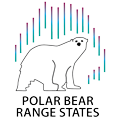10.1.1 Coping with Increasing Polar Bear Use of Alaska’s Coastline
10.1.1 Coping with Increasing Polar Bear Use of Alaska’s Coastline
Description
Presentation Title: Coping with Increasing Polar Bear Use of Alaska’s Coastline
Summary: As sea ice diminishes, polar bears are increasing their use of terrestrial habitat along the northern coast of Alaska during summer and fall months, raising concerns for public safety in rural villages and industrial work areas, as well as for the welfare of polar bears. Recent studies indicate that the proportion of polar bears using the Beaufort Sea coast has increased, and that trends of earlier arrival, increased length of stay, and later departure back to sea ice are occurring.
The highest density of polar bears along the Beaufort Sea coast of Alaska occurs at Barter Island, home to the small Inupiat community of Kaktovik, whose residents rely on the annual fall harvest of bowhead whales for food sustenance. The un-salvaged remains from this harvest are deposited in a “bone pile” that attracts a large aggregation of polar bears annually. Over the last decade, the predictable presence of polar bears around Kaktovik has also led to an increase in polar bear tourism and commercial filming. This increase of both polar bears and humans along the coast, particularly around Kaktovik, presents unique management challenges and a collaborative approach during a time of rapidly changing environmental conditions.
This presentation provides an overview of actions being taken by the U.S. Fish and Wildlife Service, in collaboration with a variety of others, to cope with the increased presence of bears along Alaska’s Beaufort Sea coast, as well as the human visitors who wish to view them. Specific actions include: 1) conducting biological monitoring and research; 2) implementing deterrence programs in villages and industrial areas; 3) managing food attractants; 4) managing polar bear viewing, tourism, and commercial filming around Kaktovik; 5) developing educational materials and conducting outreach; and 6) improving emergency response capabilities for oiled, orphaned, and injured polar bears.
